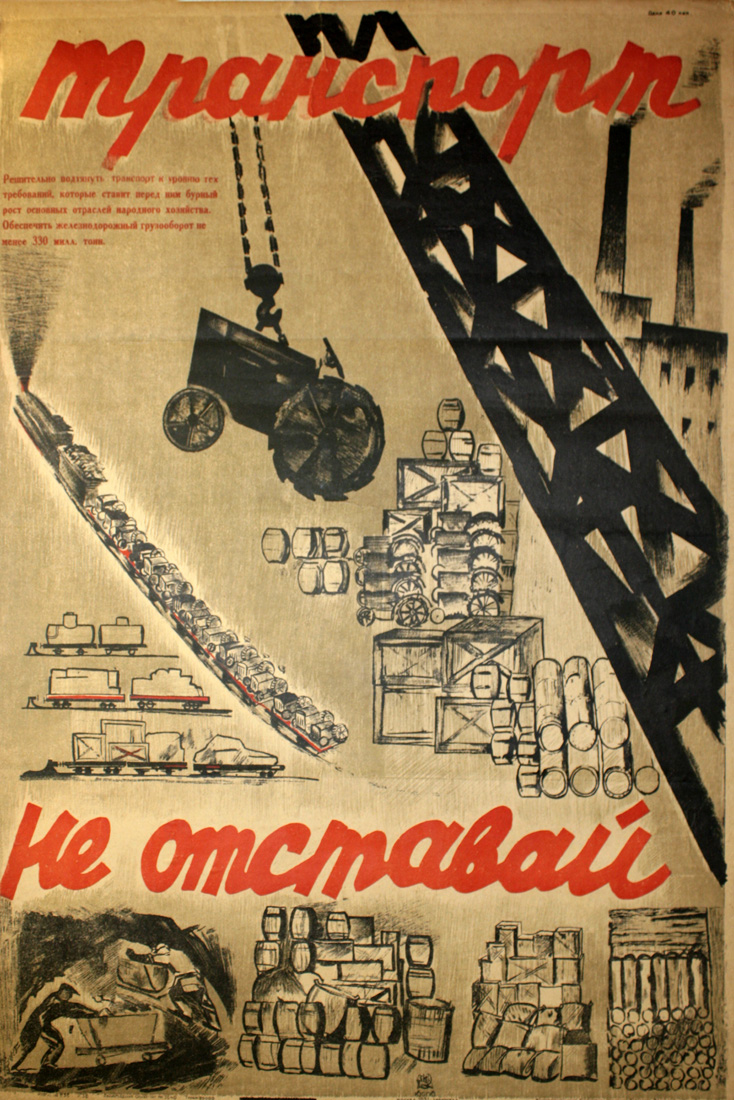
El transporte, que no se retrase “Debemos elevar con decisión el transporte al nivel de las exigencias que el rápido crecimiento de los sectores básicos de la industria pública nos impone: debemos crear a un transporte ferroviario de mercancías anual de no menos de 330.000 toneladas.”
Número de Cartel: PP 266
Información sobre el cartel: A pesar de que el tema principal de este cartel es la industria, su mensaje sobre el “rápido crecimiento” y fecha de publicación en 1931 nos revelan que fue creado durante el primer Plan Quinquenal. El tractor que aparece en el centro de la imagen parece ser el modelo SKhTZ-15/30, producido en 1931. Las principales fábricas de tractores de la URSS en la década de los años 30 del siglo XX estaban en Stalingrado, Járkov y Moscú.
Tamaño: 38.5x27.5
Tipo de cartel: Litografía
Fecha de publicación: 1931
Ediciones: 20,000
En el catologo: PP 266 Industry b
Artista: Artist Studios (Kh.M.) — Художественные Мастерские (ХМ)
Kh.M. is the abbreviation for the State Free Artists' Studios (Khudozhestvenye Masterskie), a poster arts cooperative of Izogiz publishers. In 1930, Kh.M studios existed only in Moscow and Leningrad and it was turning out propaganda for the First Five-Year Plan and for the efforts of collectivization. The earliest poster works created by the cooperative thus reflect these two themes. Team methods were used in the creation of each Kh.M poster. In ...
Leer más...
Editorial: IzoGiz (State Publishing House of Fine Art), Moscow-Leningrad — Изогиз (Государственное издательство изобразительного искусства), Москва-Ленинград
The history of IzoGiz begins with the formation of Ogiz, the Association of the State Book and Magazine Publishers. In 1930, the Sovnarkom of the Russian Socialist Federative Soviet Republic established Ogiz to centralize publishing under a monopoly in order to eliminate duplication of printed material, to streamline and control publishing production and its output, and to create a base for marketing books, training and technical manuals. In 1931, the Central Committee of the USSR ordered certain ...
Leer más...